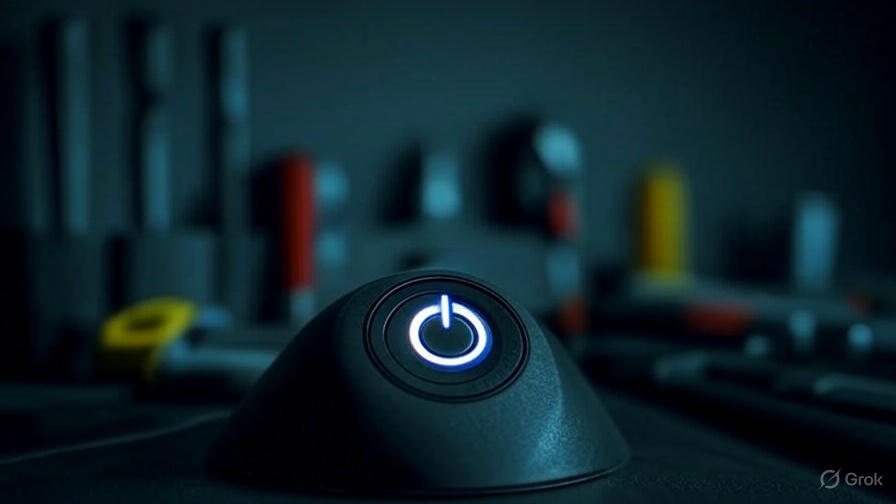What to Do When Your PC Won’t Turn On: A Step-by-Step Troubleshooting Guide
When your PC refuses to turn on, it can feel like a nightmare, especially if you rely on it for work, gaming, or daily tasks. But don’t panic! Many common issues can cause a computer to not start, and most are fixable with some basic troubleshooting. In this guide, we’ll walk you through the steps to diagnose and resolve the problem, helping you get your PC back up and running.
Why Won’t My PC Turn On?
There are several reasons your computer might not power on, ranging from simple connection issues to hardware failures. Common causes include:
- Power supply problems: A faulty power supply unit (PSU) or loose cables.
- Dead motherboard: The central component may have failed.
- Overheating: Components may shut down to prevent damage.
- Faulty power button: The button or its connection may be broken.
- Drained CMOS battery: A dead battery can prevent booting.
- Hardware conflicts: New or incompatible hardware may cause issues.
Let’s dive into the troubleshooting steps to identify and fix the problem.
Step-by-Step Guide to Fix a PC That Won’t Turn On
1. Check the Power Source
Before diving into complex fixes, ensure your PC is receiving power.
- Verify the outlet: Plug another device (like a lamp) into the same outlet to confirm it’s working.
- Check the power cable: Ensure the cable is securely connected to both the PC and the outlet. Try a different cable if possible.
- Inspect the power strip: If using a power strip or surge protector, ensure it’s turned on and functional.
If the outlet and cables are fine but the PC still won’t turn on, move to the next step.
2. Inspect the Power Button
A faulty power button or its connection to the motherboard can prevent your PC from starting.
- Press the power button firmly and hold it for a few seconds.
- Look for any lights or sounds (fans spinning, beeps) when you press the button.
- If nothing happens, the button or its wiring may be faulty. You may need to consult a technician to test the front panel connectors.
3. Test the Power Supply Unit (PSU)
The PSU is the heart of your PC’s power system. If it’s failing, your computer won’t start.
- Check for PSU activity: Listen for a faint hum or fan noise from the PSU when you press the power button.
- Use a PSU tester: If you have a PSU tester, use it to check if the unit is delivering power.
- Try a spare PSU: If possible, swap in a known working PSU to test if the original is faulty.
- Look for burnt smells or damage: A burnt smell from the PSU indicates failure—replace it immediately.
Replacing a PSU is relatively affordable, with units starting at $30–$100 depending on wattage.
4. Reset the Motherboard
Sometimes, a motherboard glitch can prevent your PC from booting. Resetting it may help.
- Unplug the PC and turn off the PSU switch.
- Remove the CMOS battery: Open the case, locate the small, round battery on the motherboard, and remove it for 5–10 minutes.
- Short the CMOS pins: Alternatively, use the motherboard’s jumper pins (check the manual) to clear the CMOS.
- Reinsert the battery, plug in the PC, and try turning it on.
5. Check for Loose or Faulty Hardware
Loose or incompatible hardware can cause power issues.
- Reseat components: Open the case and gently press down on the RAM, GPU, and other components to ensure they’re secure.
- Remove non-essential hardware: Disconnect external drives, extra RAM sticks, or secondary GPUs, then try booting.
- Inspect for damage: Look for swollen capacitors, burnt chips, or bent pins on the motherboard or CPU.
If you recently installed new hardware, remove it and test again to rule out compatibility issues.
6. Listen for Beep Codes or Check Diagnostic LEDs
Many motherboards emit beep codes or display LED patterns to indicate errors.
- Beep codes: Count the number of beeps and refer to your motherboard’s manual for their meaning (e.g., one beep often means all is well, while multiple beeps may indicate RAM issues).
- Diagnostic LEDs: Check if your motherboard has LEDs that light up in specific patterns to signal problems.
These codes can point to specific hardware failures, like faulty RAM or a dead GPU.
7. Test the Monitor and Cables
Sometimes, the PC is running, but the display isn’t working, making it seem like the computer won’t turn on.
- Ensure the monitor is powered on and connected securely to the PC.
- Try a different cable (HDMI, DisplayPort, or VGA) or port on the GPU.
- Test the monitor with another device to confirm it’s working.
8. Check for Overheating
If your PC shuts down shortly after powering on or doesn’t start at all, overheating could be the culprit.
- Clean the case: Remove dust from fans, heatsinks, and vents using compressed air.
- Check thermal paste: If the CPU or GPU is overheating, the thermal paste may need reapplication.
- Ensure proper airflow: Verify that fans are spinning and the case has adequate ventilation.
9. Consider a Faulty Motherboard or CPU
If none of the above steps work, the motherboard or CPU may be dead.
- Motherboard failure: A failed motherboard often shows no signs of life (no lights, fans, or beeps). Testing requires specialized tools or a technician.
- CPU failure: Rare but possible. If the CPU is damaged, the PC may power on but fail to boot.
Replacing these components can be costly ($100–$500), so consider professional diagnostics before purchasing replacements.
10. Seek Professional Help
If you’ve tried everything and your PC still won’t turn on, it’s time to consult a professional.
- Take your PC to a certified repair shop for advanced diagnostics.
- Provide details about what you’ve already tried to save time and money.
- Expect repair costs to range from $50–$200, depending on the issue.
Prevent Future PC Power Issues
To avoid future problems, follow these tips:
- Use a surge protector to shield your PC from power spikes.
- Keep your case clean to prevent dust buildup and overheating.
- Update your BIOS and drivers regularly to avoid compatibility issues.
- Invest in a reliable PSU with adequate wattage for your components.
Conclusion
A PC that won’t turn on can be frustrating, but with systematic troubleshooting, you can often pinpoint and fix the issue. Start with simple checks like the power source and cables, then move to hardware diagnostics. If all else fails, a professional technician can help. By following this guide, you’ll be well-equipped to tackle the problem and get your computer back to life.






